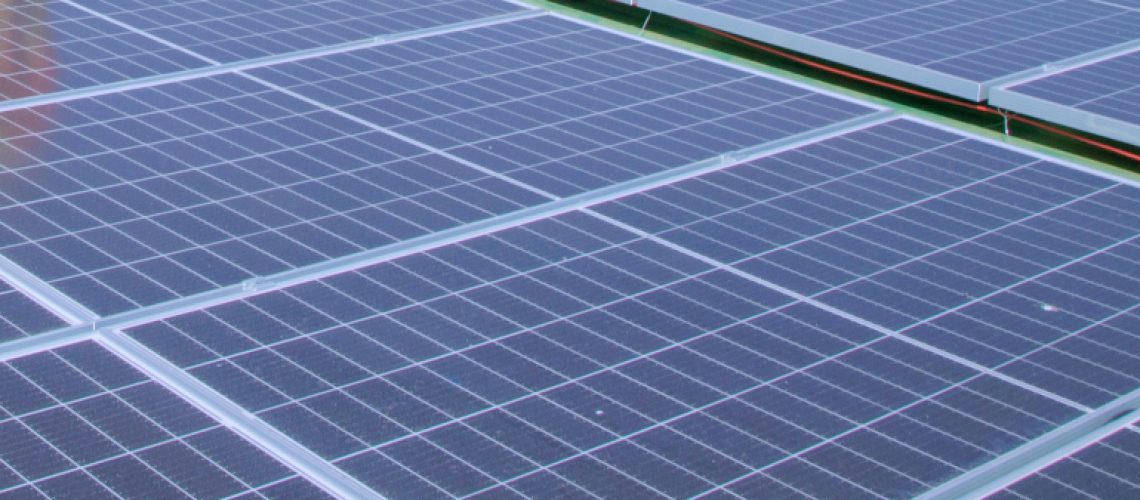Expanding on the Biden-Harris Administration’s investments in the nation’s climate resilience, today Homeland Security Secretary Alejandro N. Mayorkas and FEMA Administrator Deanne Criswell announced that the agency will expand funding to tackle the climate crisis, improve resilience and cut energy costs through net-zero projects.
For the first time, FEMA will fund net-zero energy projects, including solar, through its Public Assistance grant program, which covers rebuilding schools, hospitals, fire stations and other community infrastructure investments post-disasters. FEMA is also funding net-zero energy projects for its Hazard Mitigation Grant Program (HMGP) and now offers incentives through its Building Resilient Infrastructure and Communities (BRIC) annual grant program to encourage more communities to use net-zero projects that increase community resilience.
“Whenever and wherever a community is impacted by a natural disaster, the Department of Homeland Security is there to help recover and build back stronger,” Mayorkas said. “Now, that work will include incorporating smart, net-zero energy techniques and technology — like solar panels and heat pumps — into the rebuilding of critical infrastructure like hospitals and fire stations. The Biden-Harris Investing in America agenda is proof that we can both meet the safety, security and stability needs of local communities, and do so in a responsible, climate-conscious way that increases their resilience.”
These activities are enabled by President Joe Biden’s Inflation Reduction Act, the largest investment in clean energy and climate action in U.S. history.
Public Assistance, Hazard Mitigation Grant Program
FEMA’s Public Assistance program provides supplemental grants so that state, tribal, territorial and local governments can develop hazard mitigation plans and rebuild in a way that reduces or mitigates future disaster losses in their communities. This grant funding is available after a presidentially declared disaster.
Net-zero infrastructure and buildings using renewable energy sources like solar power are more resilient and can retain electricity and safety in emergencies such as brown-outs, black-outs and extreme temperatures. Solar microgrids are included in FEMA’s eligible net zero projects. States, tribes and territories can now submit expenses for these activities for FEMA reimbursement.
For any federal disaster declared after Aug. 16, 2022, applicants may now use FEMA financial assistance for unobligated projects under these programs to participate through Public Assistance and Hazard Mitigation Grant Program funding. As of Jan. 30, more than 80 disasters have been declared across all 10 FEMA regions during this time.
Disasters are becoming more frequent and severe. Since 2019, the United States has experienced an average of 20.4 weather and climate disasters per year costing more than $1 billion each. This is an increase from an annual average of 3.3 such disasters in the 1980s. In 2023 alone, there were a record 28 confirmed weather and climate disaster events costing over $1 billion each in the United States.
“As the increase of extreme weather hazards become more severe due to climate change, we need to adapt the way we are helping communities rebuild post-disaster,” Criswell said. “Thanks to President Biden’s Investing in America agenda and the Inflation Reduction Act, FEMA will now cover the costs of net-zero energy projects since they are the single most effective measure FEMA can take to reduce greenhouse gas emissions and address the climate crisis.”
The built environment contributes to nearly 40% of greenhouse gas emissions. In 2023 alone, FEMA spent over $10 billion on rebuilding and hazard mitigation construction, making the federal government the single largest purchaser of construction materials in the United States.
Acknowledging this, FEMA has joined 12 other federal agencies, making up 90% of federal procurement, in a Federal Buy Clean Initiative to tackle the climate crisis. In addition to reducing activities that fuel climate-induced hazards, FEMA funding net-zero projects can cut utility costs, increase energy reliability and reduce disaster-related costs for communities.
The BRIC program is a part of the Biden-Harris Administration’s unprecedented investments in communities to support an equitable transition to a sustainable economy and healthier environment for all. The program also advances the President’s Justice40 Initiative that set a goal to deliver 40% of the overall benefits of certain federal investments to disadvantaged communities that are marginalized by underinvestment and overburdened by pollution.
“After a disaster, communities don’t just want to build back. They want infrastructure that will last and will serve them better in a future that promises more extreme weather events fueled by the climate crisis,” said John Podesta, Senior Advisor to the President for Clean Energy Innovation and Implementation. “FEMA is doing just that thanks to President Biden’s Inflation Reduction Act.”
Any community interested in introducing low-carbon materials or implementing net-zero energy projects can work directly with their point of contact at their FEMA region or reach out at FEMA-IRA-Implementation@fema.dhs.gov or fema-climate@fema.dhs.gov.
News item from FEMA



